金曜日, 8月 27th, 2010...1:11 PM
Experiencing Tea Ceremony Class
Reading time: About 5 minutes
Experiencing Tea Ceremony ClassI went to a tea ceremony class with my friend. Even though I am Japanese, it was my first time experiencing a tea ceremony.
The class was held by Shuntaro Kondo, the tea master of Urasenke. Working at a company, he is experienced in the way of tea, once being sent to China as the representative of Urasenka within the Culture and Art delegation. in November of 2009, he has started “Avant-garde Tea Ceremony”, a new organization where new style of tea ceremony is being explored. He is active in introducing Japanese culture. Please check his profile for more information.
The class was held at Mr. Kondo’s home located at Soshigaya Okura, Setagaya-ku, Tokyo . It takes 20 to 30 minutes by train using Odakyu Line from Shinjuku. In Soshigaya Okura station, there is statue of Ultra Man standing. Walking along the track for 5 minute from the station, you will reach his home.
The class takes place in the Japanese-style room. This time, there were 3 other people besides us. There were Japanese calligrapher Tokujin Ishikawa and his wife and a doctor who likes diving and yoga. The three of them has already taken these class 2 or 3 times.
Mr. Kondo prepares the class so that the beginner can experience the tea ceremony at ease. Everyone is participating in regular clothes except for we brought white socks. Also you do not have to sit in Japanese style (sit erect with one’s legs folded under one).
Now, let’s start the class.
First we eat the Japanese sweet.
Today’s sweet is “aonari”. It is a jelly-like sweet in a shape of gourd with anko in it. During the hot summer, these cool sweet tastes good.
You look at the sweet once and take it on a special paper called kaishi, and then eat. If the sweets are hard to pick it up with chopsticks, you can stab them with chopsticks. After serving, wipe the chopsticks with the kaishi and eat with toothpick.
Next, Mr. Kondo will prepare the tea to serve us.
This time the style of temae was “arai chakin”, a summer temae. Chakin, a cloth used in tea ceremony, and water are placed in teacup and during the otemae, we enjoy the sound of running water made by squeezing the chakin. This otemae is especially for summer to feel cool by hearing the sound of running water.
Mr. Kondo makes tea for each one of us and we drink in order.
We learn the way to drink tea and how to bow.
We do as we learned but it got all mixed up with due to the languages and movements we don’t use daily.
After drinking tea, we take a look at the teacup, tea set, and tea scoop. Make sure not to pick up the teacup at away from the floor. Place your elbows on your knees to stabilize the hands. Then bend forward, pick it up, and observe.
Then we practiced mixing tea. We only mixed the tea with bamboo wisk but the other three practiced the whole move.
When mixing tea, a small silk cloth called fukusa is used to wipe utensils. Officially, men use purple and women use cinnabar red.
First, we learned how to fold fukusa. It is hard to remember, however, once you understand the meaning to the folds by looking at the practices, you will be surprised.
There are no extra movements in making tea and the same will apply to folding fukusa as well; the fukusa will turn back to the original shape just by picking the end.
It was hard during practice but I would like to be able to smoothly do it.
As we watched the others practicing the whole routine with the corner of our eyes, we actually challenged on making tea.
Pour hot water to teacup with maccha in it and mix it with bamboo wisk.
You are supposed to use the snap of your wrist, shake the wisk back and forward and lastly write a hiragana 「の」and put the wisk back. However, when I actually drink it. it tasted different than the one Mr. Kondo made.
Mr. Kondo showed us an example. The secret is to lift the wisk 1mm away from the bottom of teacup. The smell of the tea spreads and small bubbles start to cover the surface. It tastes way better. Of course the teacher is good.
At the end of the 2 hour long class, Mr. Kondo cleaned the utensils and placed them back to where it belonged.
Originally, tea ceremony takes about 4 hours with full course of light meal, koicha, an usucha. It will take a lot of practice in order to be able to make koicha. Think of koicha as espresso where usucha is cappuccino. The purpose of training is to serve in the most polite way.
Today’s class was about usucha, the easiest practice of tea ceremony. The class will become a good place to learn about tea ceremony for all beginners.
Tea ceremony seems to be very hard and elegant but Mr. Kondo’s class washed away those negative thoughts. It was very easy to experience and easy to understand.
I was moved with the whole movement throughout the ceremony. There was no extra move when placing or using the utensils. It was beautiful.
I hope more people experience tea ceremony.
(from the left: tea cup, banboo wisk, tea spoon, jujube)
Jujube and confetti.
The garden was designed and made by Mr. Kondo.
The left one was placed next to hanging scroll. It said ” the heart that decided to master this way, it is the teacher even though it is your body itself”.
Japanese calligrapher Tokujin Ishikawa wrote it.
Related Post
*Experience at Japan Culture Festival
*An attempt at calligraphy
*Jusaburo Tsujimura Doll Exhibition,MEGURO GAJOEN
*Wagashi,Japanese Sweets “Ichigestu”
*Art Calligraphy Report









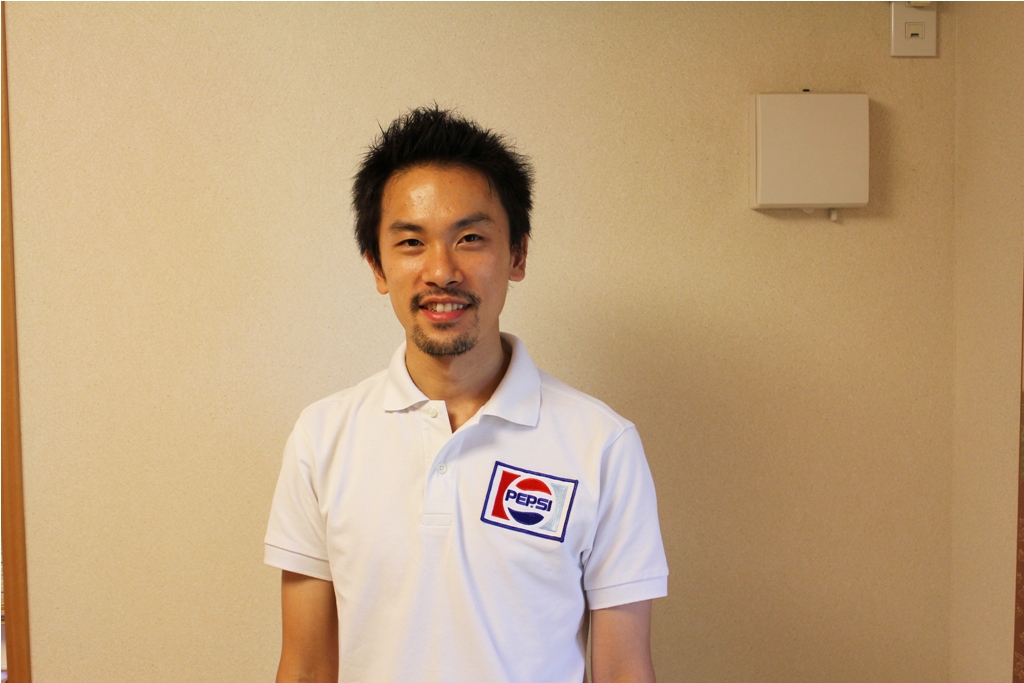
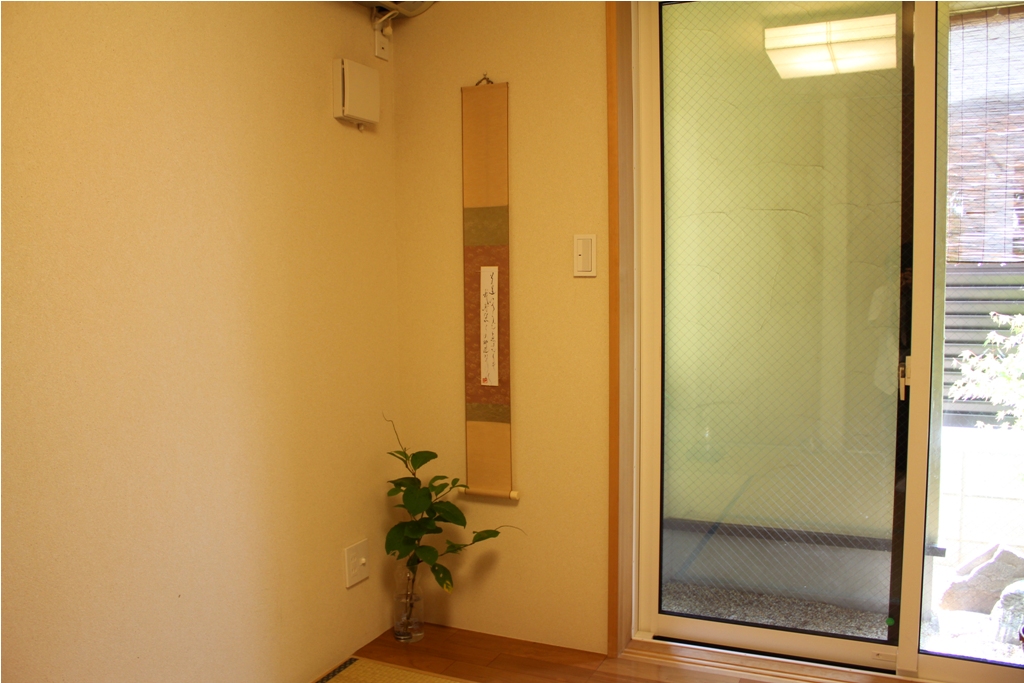
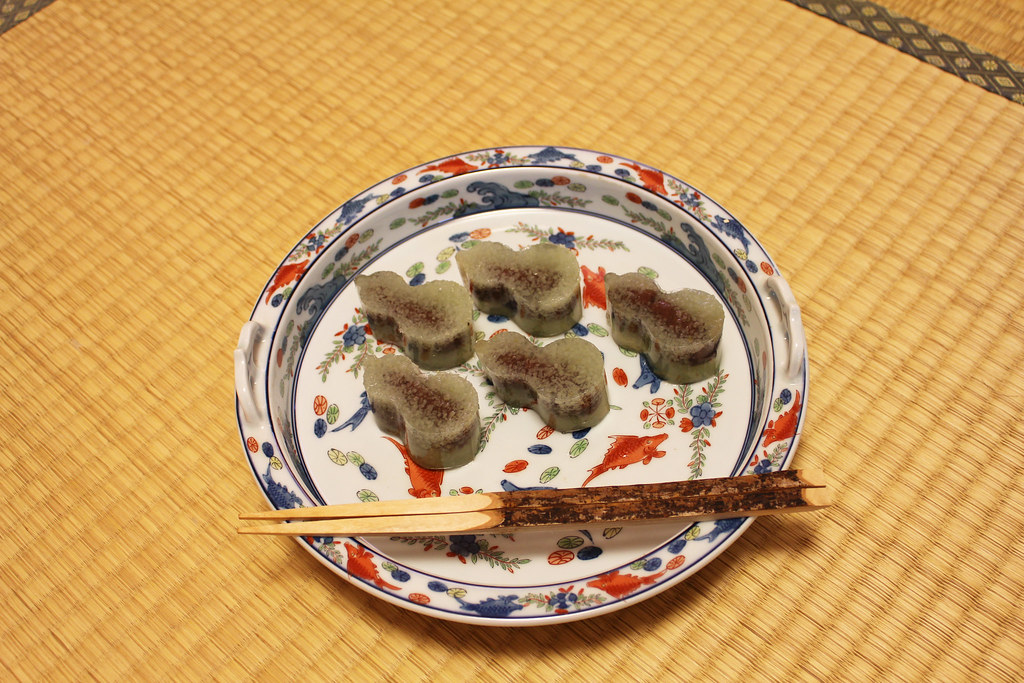
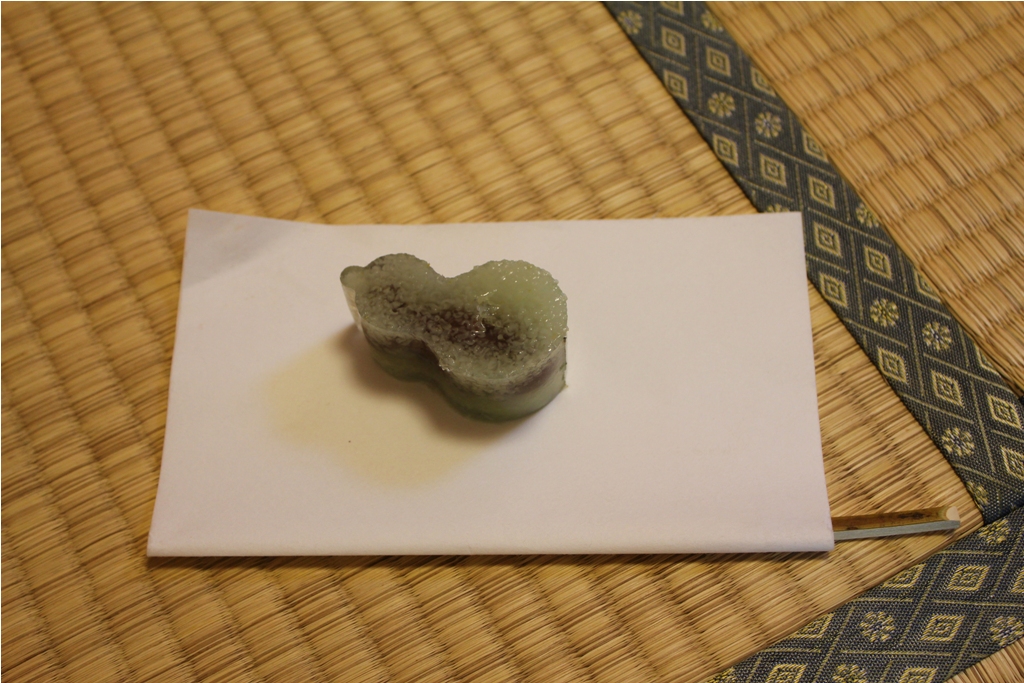
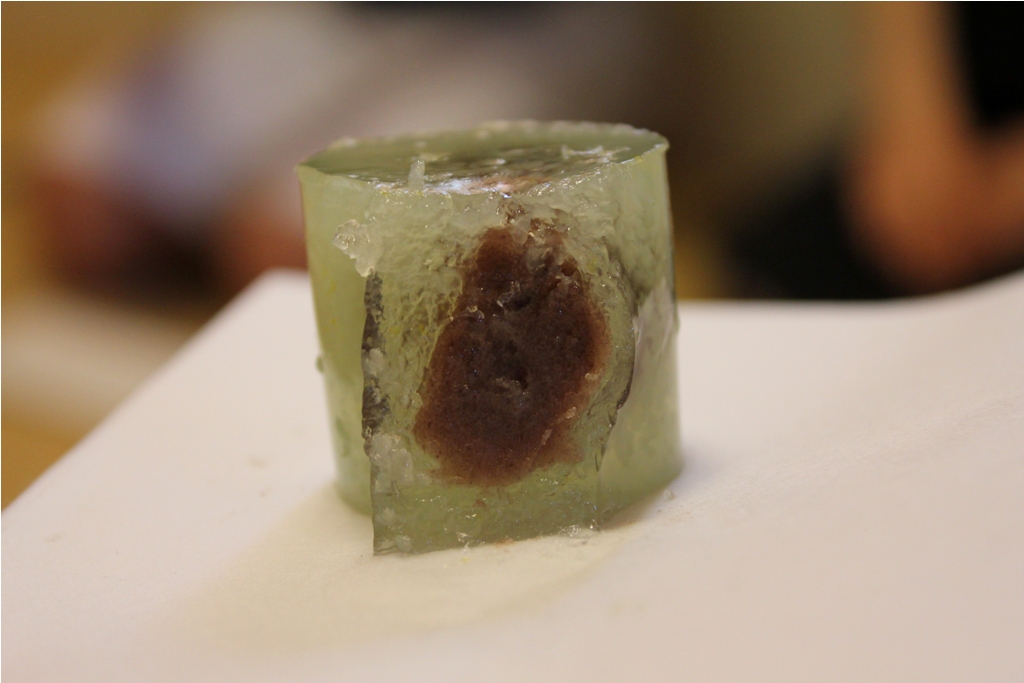
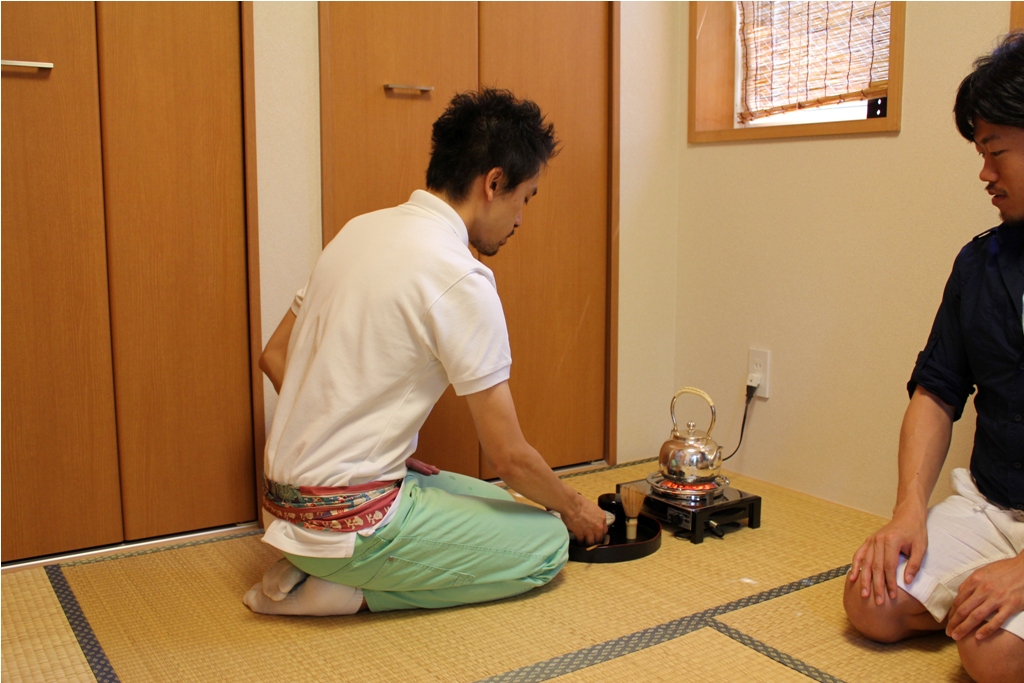
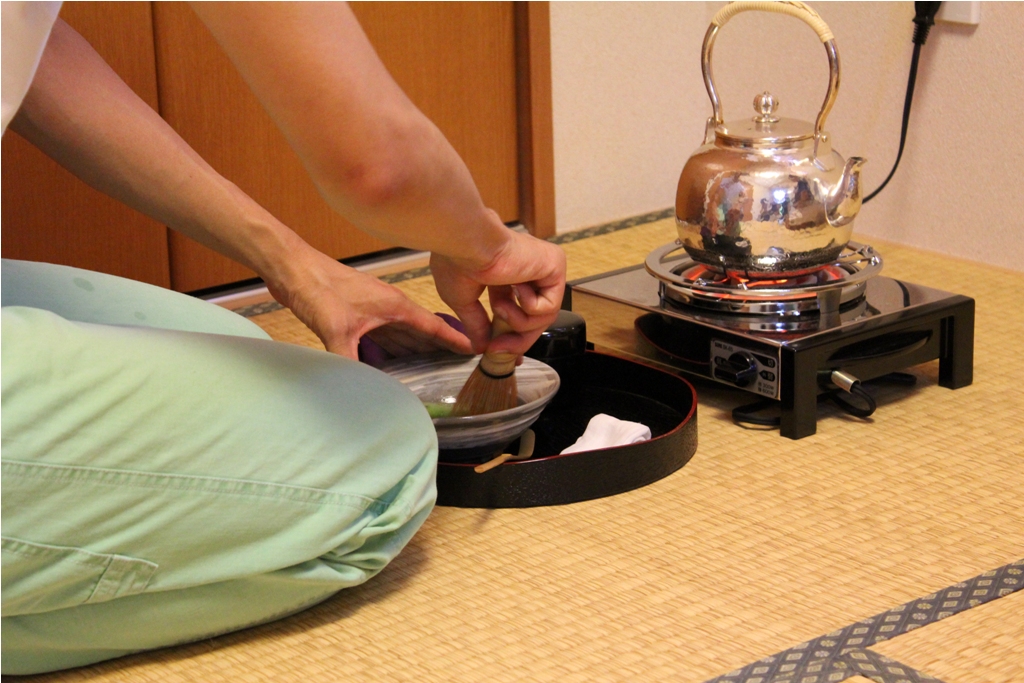
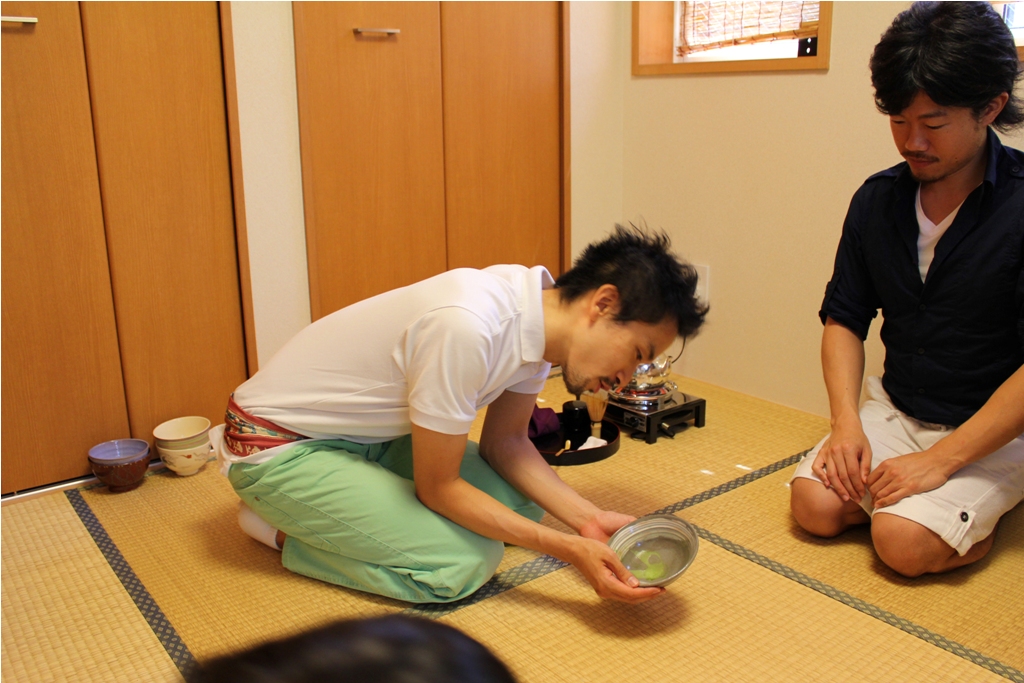


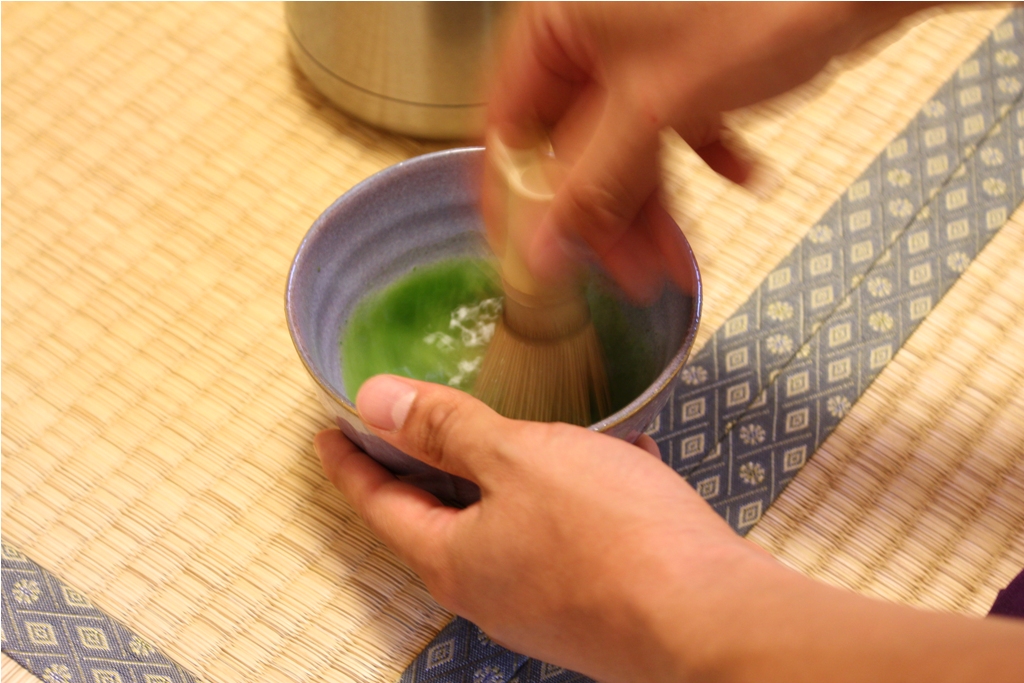

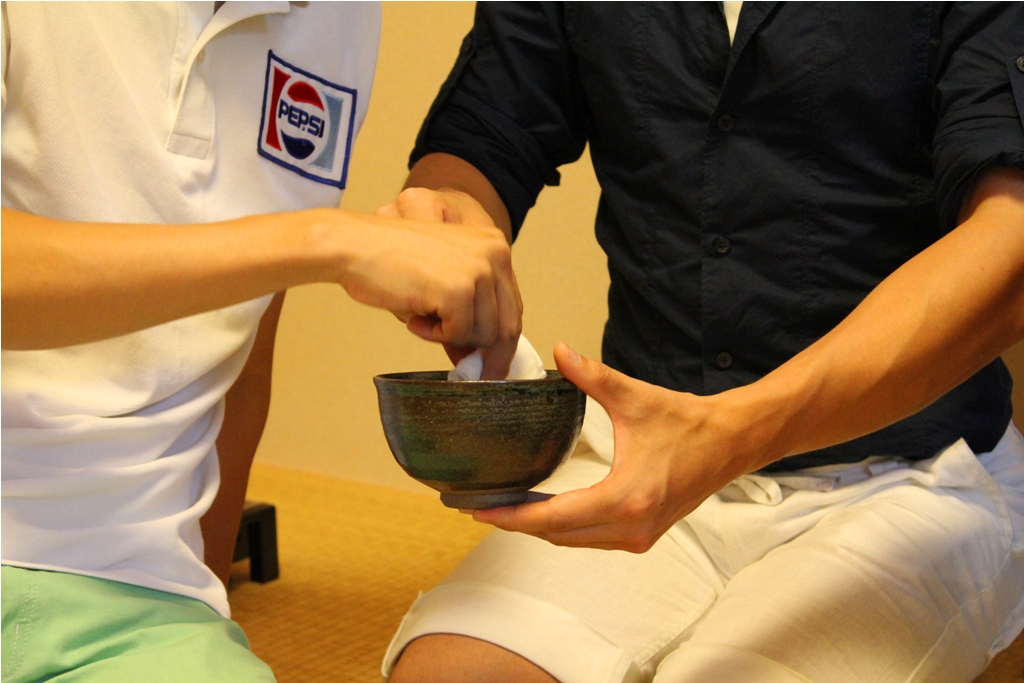
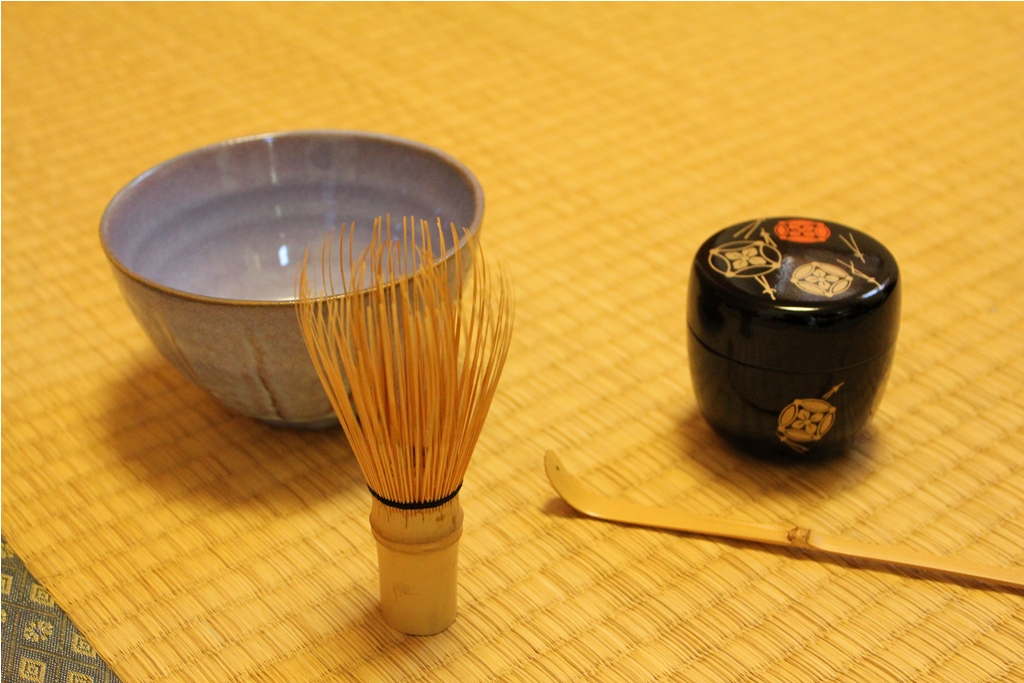
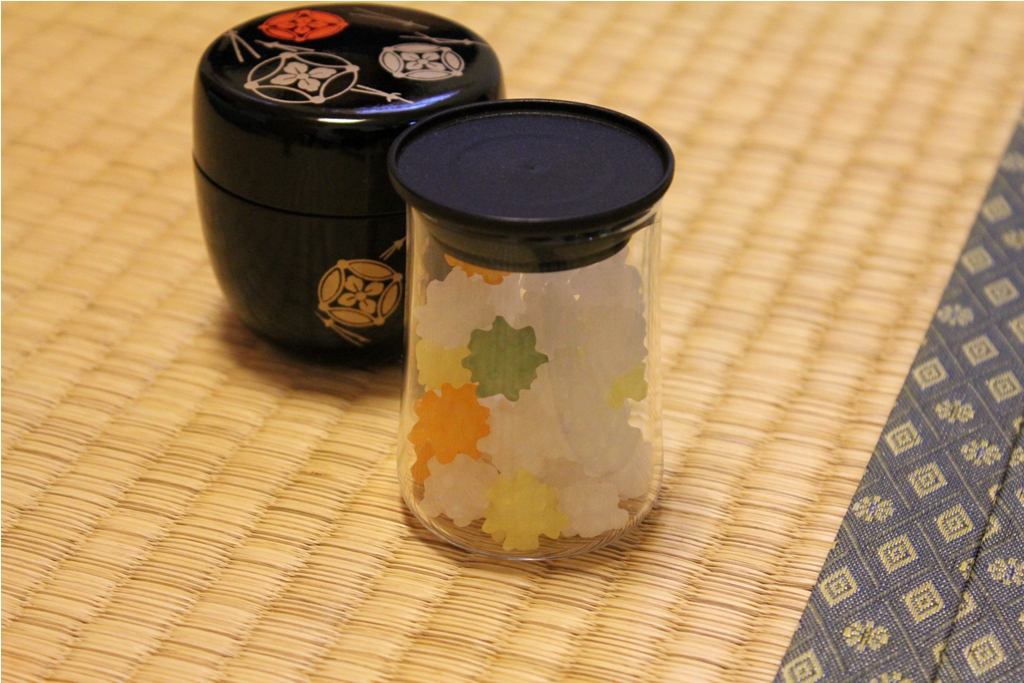













Leave a Reply